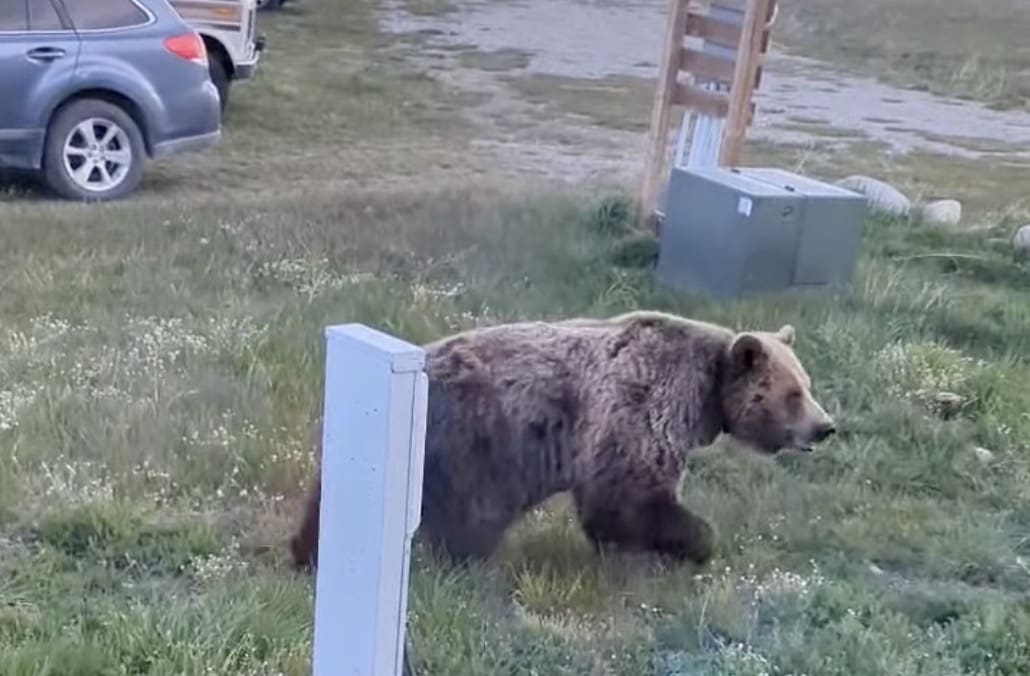Nicknamed “The Crown of the Continent” Glacier National Park is paradise for adventurous visitors and camping is great way to experience this spectacular place. Glacier National Park has 13 front country campgrounds, each varying in size and available amenities including some that can accommodate RVs up to 40 feet long.
RV campers can sleep in comfort and make use of the provided picnic tables and fire rings before exploring Glacier’s 700 mile trail network that wind through awe inspiring landscapes including melting glaciers, alpine meadows, carved valleys, and spectacular lakes. As with all Glacier campsites, RV campers are required to keep their area clean to discourage attracting the estimated 1,000 bears that call the park home. Campers should never improperly store food, leave food unattended and remain vigilant at all times for signs of bears and for careless campers nearby. Park staff should be notified immediately of any potential problems.
Even if you are stringent about campsite cleanliness at Glacier National Park, bears may still wander into your area and it’s important to remember that intentionally approaching, viewing, or engaging in any activity within 100 yards of bears is prohibited. These campers did the right thing by remaining in the RV as a sow grizzly bear and her 3 cubs wandered through their campsite.
To ensure a safe visit to Glacier National Park for both visitors and the animals, remember to keep a clean camp and to notify rangers if any of your neighbors are failing to do so. Learn more about bear safety at Glacier National Park below.
GLACIER NATIONAL PARK BEAR SAFETY GUIDELINES:
While in Camp:
Glacier’s campgrounds and developed areas can remain unattractive to bears if each visitor manages food and trash properly. Following park regulations will help keep the “wild” in wildlife and ensure your safety as well.
- Keep a clean camp. Never improperly store or leave food unattended.
- All edible items, food containers (empty or not), cookware (clean or not), and trash (including feminine hygiene products) must be stored in a vehicle or designated food locker or hung when not in use, both day and night.
- Do not throw any food or garbage into pit toilets.
- Monitor your campsite for signs of bears and for careless campers nearby. Notify park staff of any potential problems.
Bear Encounters:
If you encounter a bear inside the minimum recommended safe distance (100 yards; 91 m), you can decrease your risk by following these guidelines:
- If a bear or other animal is moving in your direction on a trail, get out of its way and let it pass.
- If you can move away, do so. If moving away appears to agitate the bear, stop. In general, bears show agitation by swaying their heads, huffing, and clacking their teeth. Lowered head and laid-back ears also indicate aggression. Bears may stand on their hind legs or approach to get a better view, but these actions are not necessarily signs of aggression. The bear may not have identified you as a person and may be unable to smell or hear you from a distance. Help the bear recognize you as a friendly human.
- Talk quietly.
- Do not run! Back away slowly. Stop if it seems to agitate the bear.
- Use your peripheral vision. Bears may interpret direct eye contact as threatening.
- Continue to move away as the situation allows.
- If a bear appears intent on approaching you, your group, or your campsite in a non-defensive manner (not showing signs of agitation), gather your group together, make noise, and try to discourage the bear from further approaching. Prepare to deploy your bear spray. If you are preparing or consuming food, secure it. DO NOT LET THE BEAR GET YOUR FOOD!
- If a bear approaches in a defensive manner (appears agitated and/or charges), stop. Do not run. Talk quietly to the bear. Prepare to deploy your bear spray. If contact appears imminent and you do not have bear spray, protect your chest and abdomen by falling to the ground on your stomach, clasp your hands around the back of your neck, and leave your pack on for protection. If the bear attempts to roll you over, try to stay on your stomach. If the attack is defensive, the bear will leave once it recognizes you are not a threat. If the attack is prolonged, FIGHT BACK!


